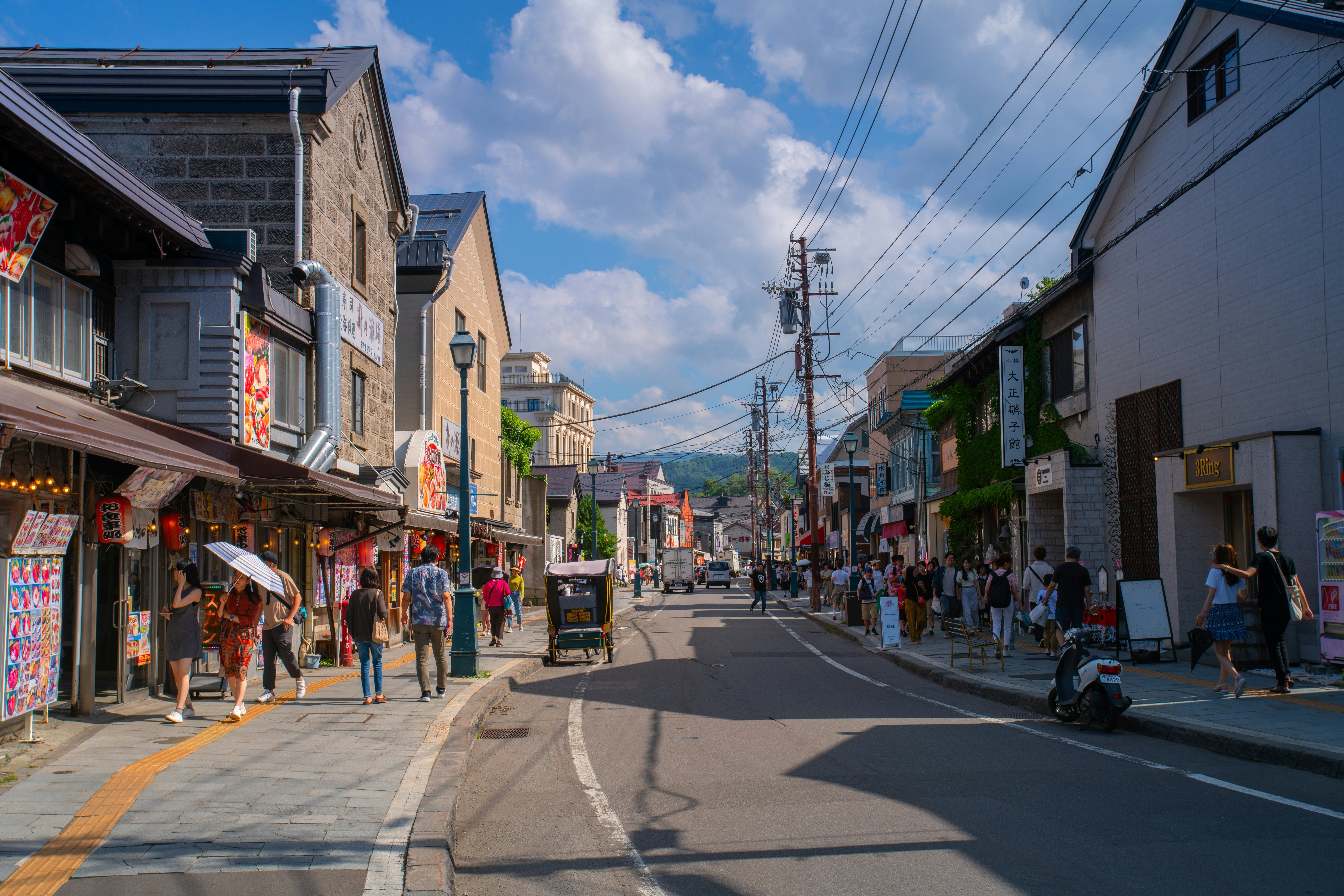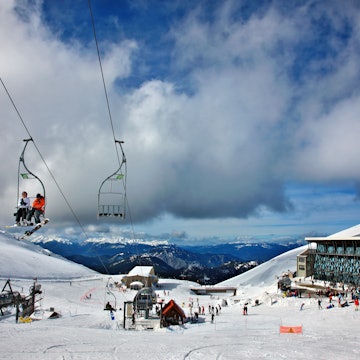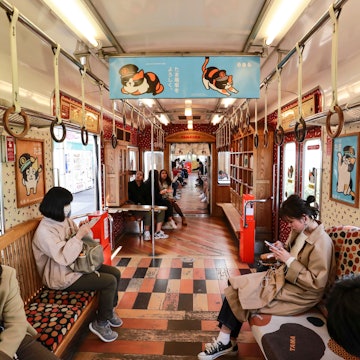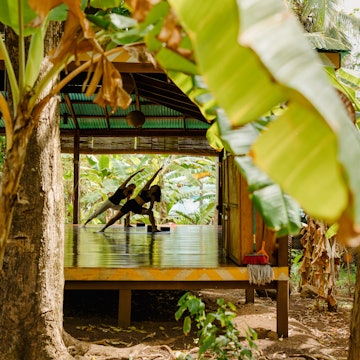

Red-crowned cranes in Hokkaidō, Japan. Pichit Tongma/Shutterstock
Any visit to Japan usually includes time in bustling, historic cities like Tokyo, Osaka or Kyoto. Visiting Hokkaidō, the country’s northernmost prefecture, on the other hand, feels in many ways like visiting a completely separate place.
On Japan’s second-largest island, you’ll find a very different, much slower pace of life. Hokkaidō is known for its natural beauty and specialty ramen (butter corn!) – and perhaps most of all for outdoor adventures. It’s a skier’s dream in winter, and avid hikers will find plenty of vertical thrills come summer.
As you plan your first trip to this laid-back corner of a one-of-a-kind country, here’s all you need to know.

When should I go to Hokkaidō?
Winter travelers (especially Australians) have been flocking to Hokkaidō for years to ski and ride the famous “Japow” (Japanese powder) – and in particular to the resort town of Niseko. Since joining the Ikon Pass in 2018, Niseko has steadily risen in popularity.
Many trips to Hokkaidō begin in capital Sapporo, a decently sized city that has a lively nightlife scene and loads of options for eating, drinking and arcades – all great indoor options for a place that gets very cold.
In the summer, Hokkaidō landscapes turn from white to lushly green. Mountain bikers and hikers will want to get out into the countryside via the island’s excellent train network.
How much time should I spend in Hokkaidō?
To get a feel for Hokkaidō rather than just a glimpse, you’ll need at least a week. There’s so much to see and discover – from the ultimate onsen (hot springs) experience at Noboribetsu, to the fabulous zoo at Asahikawa, to wildlife sightings and sweat-breaking trails at Daisetsuzan National Park – that even after two weeks you’ll barely scratch the surface.

Is it easy to get in and around Hokkaidō?
Book a flight to New Chitose Airport outside of Sapporo; from there, hop on the excellent train network to your destination. A car rental is recommended if your trip is longer than a week and you plan to explore some of Hokkaidō’s nooks and crannies (and waterfalls).
Hotels in Niseko will advise against driving up to the ski town in the winter due to challenging road conditions. But if you’ve driven on snowy streets before and secured a vehicle with 4WD, you should be fine. (Don’t forget to get an international driving permit before you leave home.) Driving with caution is, of course, crucial.
Depending on where you’re going in Hokkaidō, you may be able to get by using just public transport or rideshares and taxis. This is definitely true in Sapporo, but more challenging in Rusutsu, another popular ski area that’s working hard to lure hikers and cyclists for its second season.
Top things to do in Hokkaidō
Clip into some powder skis and hit the slopes in Niseko
Four resort areas surround one majestic mountain, Niseko Annupuri. You’ll find the most ski-in-ski-out hotels (like the lovely, Japanese-owned Ki Niseko) in the Grand Hirafu area, which is also bustling with dinner and nightlife options (book in advance during peak winter season). Exhilarating tree runs can be accessed throughout the ski terrain, with the most impressive in Hanazono (where the ritzy Park Hyatt is located). Regardless of where you wind up, you’re unlikely to have any complaints about the snow quality or quantity. It’s simply that good.

Indulge in LeTAO’s famous cheesecake
Be sure to pack Lactaid – for you won't want to miss out on Hokkaidō’s superb dairy products. Thanks to its crisp clean air and open pastures, the region makes some of the purest, most delicious-tasting yogurts, ice creams and cheeses around. For an extra-special treat, take the train to or make a road-trip pit stop at Otaru to pick up some sweet treats at LeTAO. This famous cake shop is known for its double-fromage cheesecake – which might just end up being the most memorable bites of your trip.
Discover Lake Toya
Sure, this is the caldera of an active volcano – but Mt Usu hasn’t erupted since 2000, and it’s said that there’ll be at least one day of tremors preceding any potential eruption to come. Although the lake never freezes due to its extreme depth, you’ll want to wait until it’s pleasant outside to take a boat cruise out on the gorgeous, clear water, where you can spot lakeside sculptures from your craft. If you have a car, consider making the 40-minute drive to Noboribetsu, a city known for its spectacular onsen.

Dip into onsen culture at any time of year
If you’re lucky, you’ll find yourself staying at a Japanese-run hotel or ryokan (inn) that has an onsen on site. Yet however you seek out these traditional spas, the experience is bound to push you deeper into vacation mode. You’ll begin with a cleansing ritual before entering the hot-spring-water bath, then enjoy a quiet, peaceful environment (many onsen have rules against talking) as you soothe those tired muscles. Venture to hard-to-get-to Hoheikyo Hot Spring (accessible by the Kappa Liner bus from Sapporo) for a beautifully traditional onsen day.
Follow Anthony Bourdain’s lead and order the cold soba noodles
If you’re traveling in Hokkaidō in the winter, you might be inclined to order hot soba noodles. While they’re tasty, this is not the traditional way the Japanese eat soba, as Anthony Bourdain discovered when he visited the region in 2011. They take a bowl of cold soba, best paired with piping-hot tempura (if scallops are in season, don’t think twice).
My favorite thing to do in Hokkaidō
I can’t get enough of Hokkaidō’s food scene. It’s one thing to go out for good sushi in my native New York City and order Hokkaidō scallops that might have been flown even in that day; it’s quite another to grab a spot at Nijo Market in Sapporo and eat a just-caught specimen that tastes both sweet and salty, and impossibly fresh.
The food across the board in Hokkaidō is outstanding and broad-ranging, from udon to that butter-corn ramen to sobayu (cloudy, hot broth made from boiled soba noodles).
You’ve probably heard about Japan’s beloved 7-Elevens – and I can’t help heaping on more praise. Give yourself time to browse the shelves and aisles for provisions in these convenience stores, which have everything from hot canned coffee to cream puffs to noodle salads with the dressing on the side. Grab some beer (or liquor) to bring back to your hotel room along with only-in-Japan snacks like strawberry-flavored Oreo cookies.


How much money do I need for Hokkaidō?
Keep an eye on the Japanese yen. On my recent trip, it wasn’t doing so well, meaning my dollars went rather further than the last time I had been in the country. That said, Hokkaidō is not the most inexpensive place to visit in Japan – especially in the resort towns Niseko and Rusustsu, where hotels and restaurant dinners can really stretch your budget.
Night at a downtown hotel in Sapporo: from US$200
Subway ride: US$1.50
Pastry from a local shop in Sapporo: US$1.25
Dumplings from a food truck in Niseko: US$6
Bowl of ramen and a draft beer in Ramen Alley in Sapporo: US$8
Night at a hotel in Lake Toya: from US$300
Train ticket from Kutchan to New Chitose Airport: US$15
Niseko one-day lift ticket: US$70
Download a translation app
While many hotel staff will speak some basic English (you can expect it at five-star hotels, but maybe not at three-stars), it’s not a given that an average Japanese person speaks English. You could find yourself in a bakery, a retail shop or a hidden izakaya where no one speaks a word of English beyond the basic greetings, and everything is written in Japanese. It’s helpful to have a translation app on your phone for help in communicating.
Always show respect
Whether at an onsen, a hotel or a tatami-mat kaiseki dinner, you’d do well to remember your manners. This means adhering to onsen rules (covering up tattoos, washing your body before entering the onsen); being polite to staff and returning their bows; and, when required, taking off your shoes inside.
Stick with Japanese-owned lodging
For gracious and professional service, stay at a Japanese-run hotel. A ryokan – where staff might roll out and make up your tatami mat bed each night, or offer a traditional tea service – will give you a hospitality experience unique in the world.
















